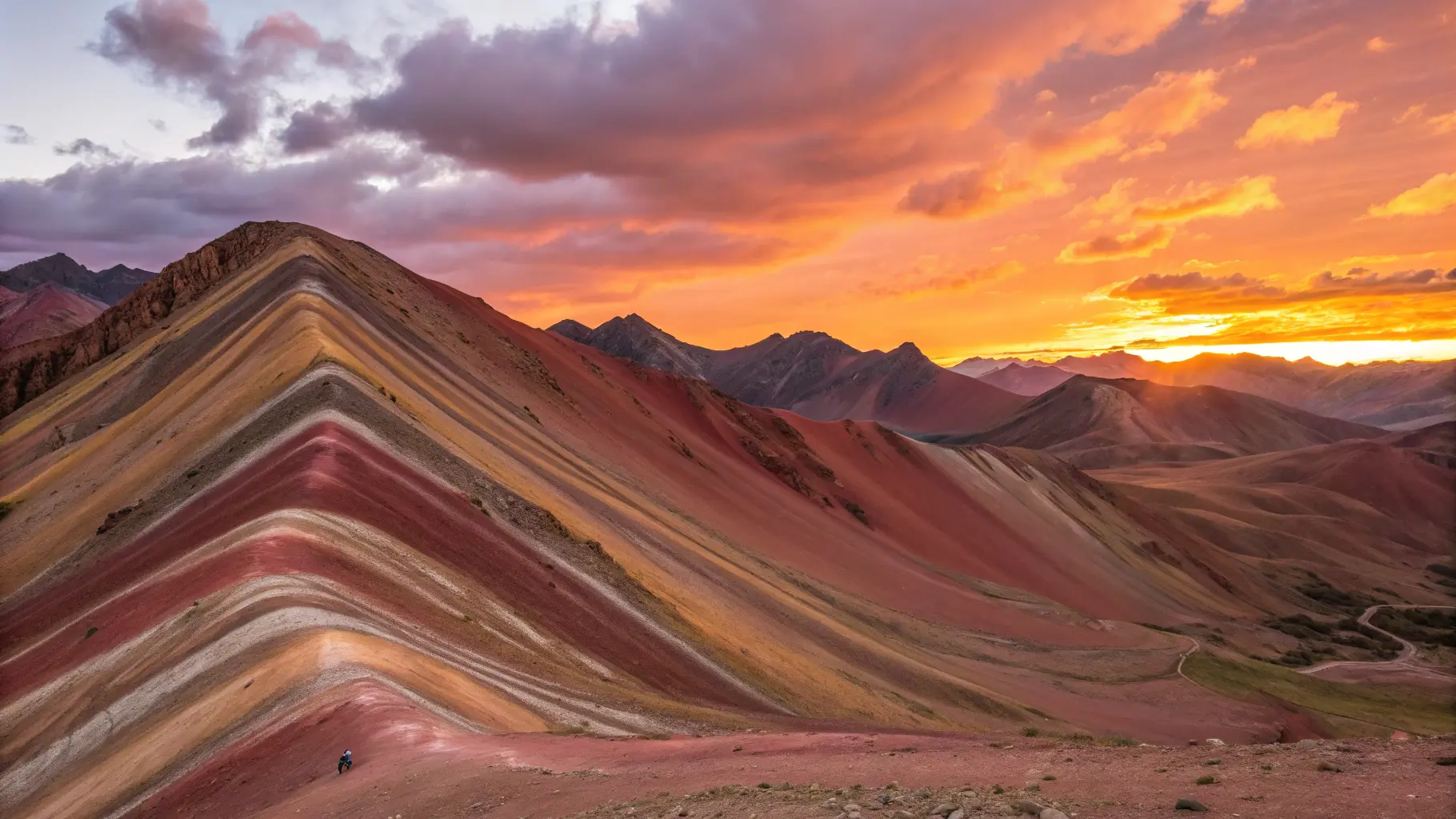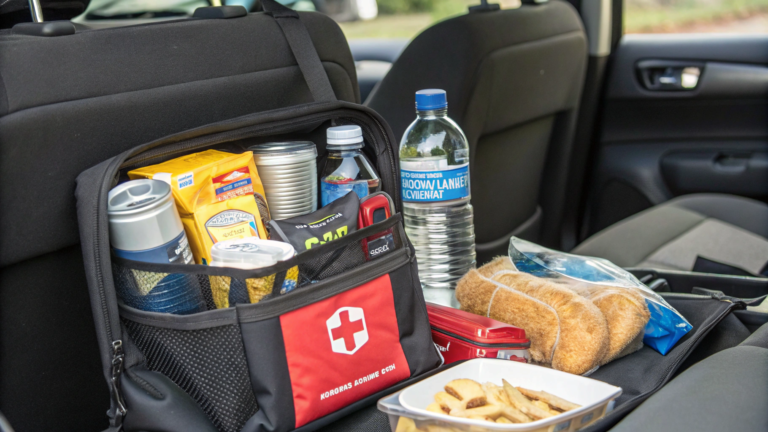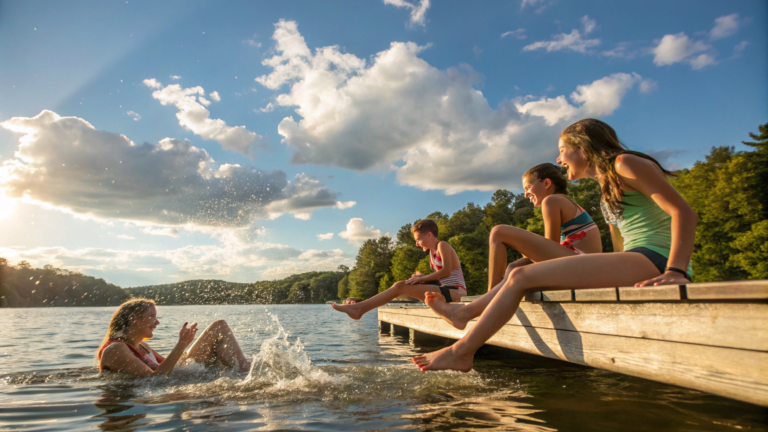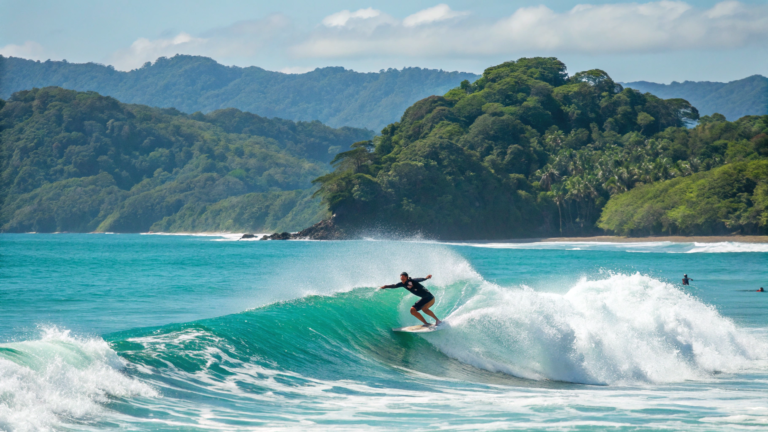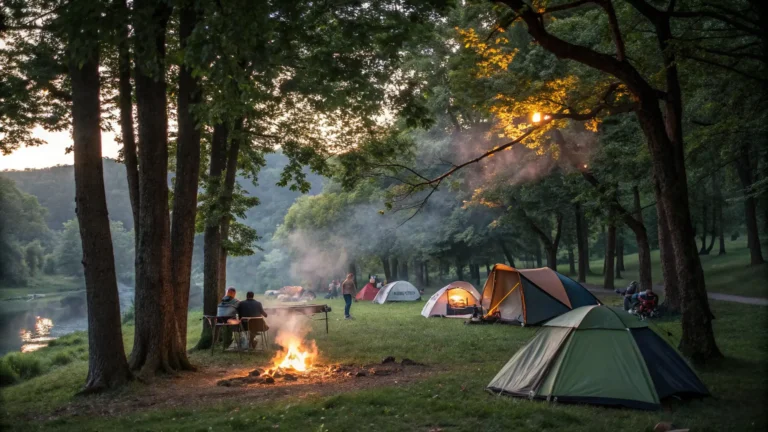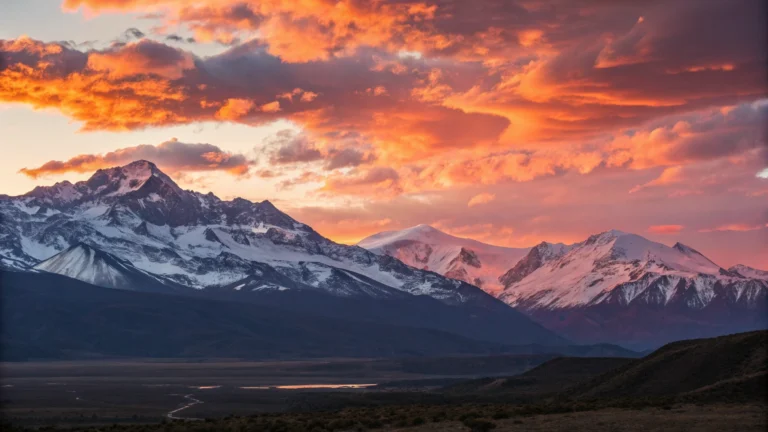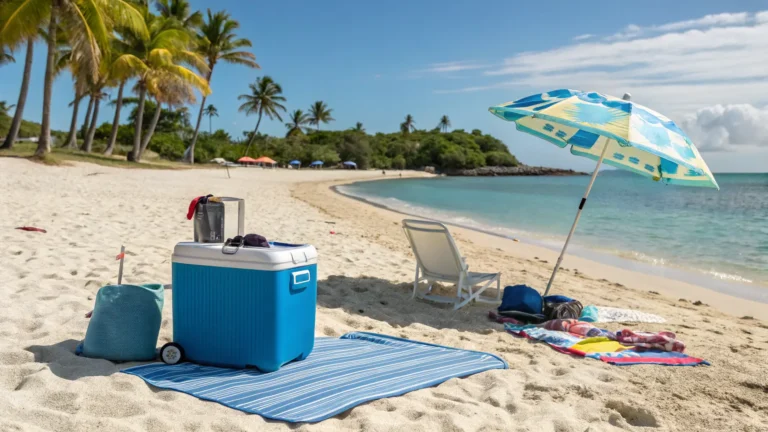Places to Visit in Peru 8 Too Beautiful to Be Real 8 Too Beautiful to Be Real
Last updated on May 27th, 2025 at 01:18 am
I’m standing at 17,000 feet, gasping like a fish out of water, when my local guide Miguel grins and points ahead. “Just around this bend, amigo.”
My legs felt like concrete. My lungs burned. After three hours of stumbling up what locals cheerfully call a “trail” (it’s basically loose rocks pretending to be a path), I was ready to turn back.
Then I saw it.
Rainbow Mountain spread out in front of me like someone had taken every crayon in the box and gone absolutely nuts. Deep reds bled into electric yellows. Purples melted into greens I didn’t know existed in nature. My travel buddy Emma burst out laughing – not because it was funny, but because our brains couldn’t process what we were seeing.
“That’s not real,” she kept saying. “That cannot be real.”
But it was. And that’s when I realized Peru doesn’t play by normal rules.
Two years and dozens of adventures later, I’ve figured out Peru’s secret: this country exists to mess with your head. Every region hides something that looks like it escaped from a fantasy movie. Mountains that look hand-painted. Lakes floating in the desert. Islands made of grass that somehow support entire families.
Peru Breaks All the Rules (And Your Brain)
Look, I’ve wandered through 43 countries. I’ve seen the Northern Lights dance over Iceland. I’ve watched the sun rise over Angkor Wat. But Peru? Peru makes you question if you’re still on the same planet.
This isn’t your typical backpacker destination where you check off monuments and move on. Peru serves up landscapes that make you stop mid-sentence and just stare. Places where your camera runs out of battery because you can’t stop shooting, then you put it away anyway because no photo could capture what you’re experiencing.
Every spot on this list made me do a double-take. Some made me cry (altitude sickness or pure emotion – I’m still not sure). All of them changed how I think about what’s possible in this world.
Machu Picchu – The One That Started My Obsession
Everyone told me I’d be disappointed. “Too touristy,” they said. “Overhyped.” They were wrong.
I dragged myself out of bed at 4 AM in Cusco, caught the first train to Aguas Calientes, then hiked up to the ruins in complete darkness. When I reached the entrance, thick fog covered everything. I couldn’t see five feet ahead.
Then the sun came up.
Slowly, like curtains being pulled back, the mist started lifting. First, I saw the outline of Huayna Picchu peak. Then stone terraces began appearing through the clouds. Finally, the entire lost city revealed itself, sitting impossibly on a ridge between two mountains.
My guide Rosa had been bringing people here for 12 years. She still got chills watching first-timers react to that moment. “It never stops being magic,” she whispered.
The Incas built this place around 1450, then vanished when Spanish conquistadors arrived. For 400 years, only local families knew it existed. Now over a million people visit annually, and every single one walks away different.
Real advice for your Machu Picchu trip:
- Book tickets 4-6 months early (not kidding – they sell out)
- Take the 6 AM train for best light and smaller crowds
- Stay in Aguas Calientes the night before to catch sunrise
- Bring water and snacks (nothing sold inside the ruins)
- Skip the crowded Inca Trail – the train ride is gorgeous
Trust me on this: all the hype is justified. This place earned its reputation.
Rainbow Mountain – Pain So Worth It Your Grandkids Will Thank You
Back to where this story began. Vinicunca wasn’t even on tourist maps until 2015. Climate change melted the snow that had covered it for centuries, revealing colors that look computer-generated.
But they’re not. Those rainbow stripes are different rock layers – iron creating reds, copper sulfate making greens, sulfur compounds producing yellows. Millions of years of geological processes painted this mountain, and we’re the first generation of humans to see it clearly.
Getting there almost broke me. The trail starts at 13,200 feet and climbs to 17,060 feet. I consider myself reasonably fit, but every ten steps I had to stop and wheeze. The altitude makes your heart pound like you just sprinted up ten flights of stairs.
Local women in traditional dress were passing me like I was standing still, spinning wool as they walked. Embarrassing doesn’t begin to cover it.
But that viewpoint… holy cow. Rainbow-striped peaks stretched to every horizon. The colors were so saturated they hurt to look at. My camera couldn’t capture the intensity, so I finally put it away and just absorbed the moment.
Rainbow Mountain survival tips:
- Start before dawn to beat crowds and weather
- Rent a horse if you’re struggling (smart, not weak)
- Pack layers – you’ll freeze, then bake, then freeze again
- Chew coca leaves or bring altitude pills
- Bring cash for entrance fees and horse rentals
The locals have lived with this mountain forever, but tourists only “discovered” it recently. Now it’s one of Peru’s most photographed spots, and honestly, it deserves every Instagram post.
Huacachina Oasis – Desert Mirage That Actually Exists
Picture this: you’re driving through Peru’s coastal desert. Nothing but sand and scattered rocks for hours. Then suddenly, palm trees appear ahead. And a lagoon. Surrounded by sand dunes that look like they belong in the Sahara.
Your first thought? “I’m hallucinating.”
Your second thought? “How the hell does this exist?”
Huacachina Oasis is South America’s only natural desert oasis, and it looks exactly like every movie desert scene you’ve ever watched. The lagoon is maybe 200 meters across, fed by underground springs that somehow bubble up through hundreds of miles of sand.
I spent three days there, and it felt like living inside a postcard. Mornings were for sandboarding down dunes that towered 500 feet above the oasis. (Pro tip: sandboarding is way harder than snowboarding. I have the bruises to prove it.) Afternoons were for lounging by the green water, watching other tourists attempt the same face-plants I’d just mastered.
But evenings? Evenings were for dune buggy rides that left me laughing and terrified in equal measure. Our driver Carlos seemed determined to get air time on every jump. “You want boring ride or fun ride?” he asked before we started. I chose fun. My insurance company probably wishes I hadn’t.
Huacachina must-dos:
- Book sunset dune buggy tours for best photos
- Try sandboarding but maybe wear long pants
- Stay at one of the oasis hotels if budget allows
- Don’t swim in the lagoon (pretty but questionable water quality)
Local legend claims an Inca princess created the oasis with tears shed for her dead lover. Normally I roll my eyes at these stories, but sitting by that impossible lagoon as the sun set over golden dunes, I almost believed it.
Maras Salt Terraces – Inca Innovation That Still Works
Forty minutes from Cusco, the mountain suddenly transforms into something from another world. Thousands of white salt pools carved into the hillside, each one gleaming like a mirror against brown Andean slopes.
These aren’t industrial salt works. They’re family businesses that have operated for over 500 years using techniques perfected by Inca engineers. Underground hot springs feed salty water into stone channels that fill each pool. Mountain sun evaporates the water, leaving behind pink-tinged crystals that families harvest by hand.
I visited during dry season when the pools looked like a massive honeycomb made of glass. The geometric patterns created different compositions from every angle. Local women in colorful clothes worked the pools, raking salt into small mountains that caught the light like tiny pyramids.
Don Alejandro has worked these pools for 30 years, inheriting them from his father who inherited them from his father. His family owns maybe eight pools total. “Same methods, same tools,” he told me in Spanish. “Why change what works?”
What makes Maras incredible:
- Over 3,000 individual pools, all family-owned
- Salt contains 84 different minerals
- Same harvesting techniques used for centuries
- Pink color comes from mineral content
- Each pool produces maybe 150 pounds annually
You can buy salt directly from families who work the pools. It costs more than grocery store salt, but knowing the story behind each crystal makes it worth every penny. Plus, it actually tastes better – more complex, less harsh.
Laguna 69 – Blue That Punches You in the Face
Some hikes reward you with nice views. Others completely rearrange your understanding of what blue can look like.
Laguna 69 falls into the second category.
The trail through Huascarán National Park starts easy enough – gentle valley walking surrounded by wildflowers (if you time it right). But then it turns upward. And keeps turning upward. For four hours, you climb steadily toward 15,260 feet, passing smaller lakes that tease you with glimpses of what’s coming.
Then you crest that final ridge.
The lake spreads out below you, glowing turquoise so intense it looks artificial. But you’re standing there, lungs burning from the climb, knowing it’s absolutely real. The blue comes from glacial flour – rock particles ground to powder by glaciers and suspended in the water. It’s the same phenomenon that creates those famous Canadian Rockies lakes, but somehow more intense here.
I sat by that lake for an hour, trying to process the color. My eyes kept adjusting to it, then being shocked all over again. Photos don’t capture the intensity – the blue is so saturated it almost vibrates.
Laguna 69 hiking reality:
- It’s a legitimate workout at serious altitude
- Weather changes without warning up there
- Start early to avoid afternoon storms
- Bring more water than seems reasonable
- Pack warm clothes even if it’s sunny
The hike nearly killed me, but sitting by that impossible blue lake, watching clouds reflect in water that looked like liquid sapphire, I understood why people call it one of Peru’s most beautiful places.
Colca Canyon – Where Giant Birds Make You Feel Tiny
The Grand Canyon gets all the press, but Colca Canyon is twice as deep and way more alive. At 13,650 feet deep, it’s one of Earth’s deepest canyons, and it’s full of stories.
I spent five days there, staying in villages where Spanish feels like a second language and traditional ways still dominate daily life. Women weave textiles using patterns their grandmothers taught them. Men work agricultural terraces carved into canyon walls centuries ago. Life moves at Andean pace – slow, deliberate, connected to rhythms older than memory.
But the real stars are Andean condors – massive birds with 10-foot wingspans that ride morning thermals up from the canyon depths. At Cruz del Condor viewpoint around 9 AM, they soar close enough that you can see individual feathers.
Watching those condors changed my perspective on everything. Here I was, huffing and puffing just walking around at altitude, while these magnificent birds rode invisible air currents with zero effort. They’ve been gliding through this canyon for thousands of years, long before humans figured out how to fly.
Colca Canyon experiences:
- Condor viewing best between 8:30-10 AM
- Village homestays offer real cultural exchange
- Natural hot springs perfect after long hikes
- Multi-day treks for serious adventurers
- Traditional festivals happen year-round
The canyon also has hot springs where you can soak tired muscles while staring up at stars so bright they hurt your eyes. After hiking all day at altitude, slipping into those mineral-rich waters feels like pure heaven.
Amazon Rainforest – Life Turned Up to Eleven
Peru’s Amazon covers 60% of the country, but Manu National Park represents the absolute best of this ecosystem. The biodiversity numbers are staggering – over 1,000 bird species, 200 mammal species, more plant variety than almost anywhere on Earth.
But numbers don’t capture what it feels like to be surrounded by that much life.
I stayed at an eco-lodge four hours by boat from the nearest road. The sounds alone were overwhelming – howler monkeys announcing dawn, hundreds of parrot species chattering in the canopy, insects creating constant background symphony. At night, the volume doubled as nocturnal animals joined the party.
During six days in the jungle, I saw giant otters playing in oxbow lakes, poison dart frogs smaller than my thumbnail but colored like living jewels, and more bird species than my guidebook could identify. The night walks were incredible – using headlamps to spot kinkajous, various owl species, and other creatures that only emerge after dark.
My guide Pablo grew up in a riverside village and knew every sound, every track, every sign of animal presence. “The forest talks to you,” he said. “You just have to learn its language.”
Amazon adventure highlights:
- Wildlife viewing best at dawn and dusk
- Indigenous communities share traditional knowledge
- Canopy walks reveal different forest layers
- Night sounds as impressive as anything you’ll see
- Photography challenging in low light conditions
Getting there requires commitment – fly to Puerto Maldonado, then travel hours by boat through winding rivers surrounded by unbroken jungle. But that journey becomes part of the adventure, carrying you deeper into wilderness that feels untouched by modern world.
Lake Titicaca – Islands That Float (Seriously)
At 12,507 feet above sea level, Lake Titicaca already holds records as the world’s highest navigable lake. But what makes it truly mind-bending are the Uros people who built entire communities on floating islands made from reeds.
These aren’t tourist attractions. They’re neighborhoods where families have lived for generations, on islands they construct and maintain using totora reeds that grow in the lake shallows.
I spent a night with the Mamani family on their floating island, and the experience messed with my head completely. The ground literally moved beneath my feet as waves passed through the lake. Everything – houses, boats, furniture, even beds – was made entirely from reeds that needed constant replacement.
Señora Mamani showed me how they harvest reeds, braid them into thick ropes, then weave those ropes into layers that create solid (sort of) ground. Every few weeks, they add fresh reeds to the top while bottom layers slowly decompose, creating nutrients for the lake ecosystem.
“My grandfather taught my father, my father taught me, I teach my children,” she explained in Spanish. “This is our way.”
Lake Titicaca unique experiences:
- Overnight stays with Uros families
- Traditional reed boat building demonstrations
- Taquile Island weaving traditions
- Cross-border trips to Bolivian side
- Sunset photography opportunities
According to Inca mythology, this lake is where the sun god created the first Inca rulers. Standing on floating islands, surrounded by snow-capped peaks reflected in dark water, that creation story doesn’t seem far-fetched at all.
The Stuff Nobody Tells You About Peru Travel
Here’s what I wish someone had explained before my first Peru trip: this country will challenge you. The altitude is brutal. Transportation breaks down. Your carefully planned itinerary will get scrambled by weather, strikes, or mechanical failures.
But that’s also what makes it transformative.
I got altitude sickness in Cusco that left me dizzy for two days. I spent eight hours on a bus that broke down twice in the middle of nowhere. I ate street food that kept me close to bathrooms for 24 hours straight. I also had experiences that changed how I see the world and made friendships that continue three years later.
Essential Peru planning truth:
- Spend minimum three days in Cusco adjusting to altitude
- Book Machu Picchu tickets months ahead, especially May-September
- Pack for temperature swings from freezing to hot in same day
- Budget extra time and money for transportation delays
- Learn basic Spanish – it opens doors everywhere
- Carry altitude sickness medication even if you feel fine
Most importantly, stay flexible. Some of my best Peru memories happened when original plans fell apart. That broken bus led to an impromptu village festival where locals insisted I dance. The cancelled flight gave me an extra day to explore a market where I learned to make traditional textiles.
Why These Places Change You
These eight destinations aren’t just pretty spots for photos. They’re proof of what’s possible on this planet – reminders that our world contains wonders we can barely imagine.
Peru taught me to slow down and actually see places instead of rushing to check them off lists. My favorite memories aren’t from famous viewpoints – they’re from conversations with local families, unexpected wildlife encounters, and quiet moments when you realize you’re somewhere truly extraordinary.
The people you meet are genuinely proud of their country and eager to share its stories. They’ll teach you words in Quechua, invite you to try foods that don’t exist anywhere else, and probably adopt you into their extended family by the end of your visit.
Every place on this list made me stop and really absorb where I was, sometimes for the first time in months of travel. They’re destinations that remind you why you started exploring – to see things that expand your understanding of what’s possible.
Your Turn to Get Your Mind Blown
Peru is sitting there waiting to mess with your head in the best possible way. These places exist, they’re accessible (with planning), and they’re every bit as incredible as they look in photos.
Stop dreaming and start booking. Get that plane ticket, download Spanish learning apps, and prepare for landscapes that’ll make you question everything you thought you knew about our planet.
Which spot calls to you most? Are you ready for your first Peru adventure, or have you been before and want to share stories? Drop a comment – I love hearing about travel dreams and helping people plan epic trips that change their lives!

